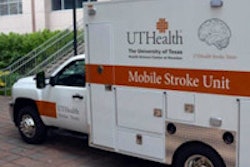Dr. Jonathon Leipsic, of Providence Health Care and the University of British Columbia, and colleagues previously reported that moderate to severe left ventricular outflow tract (LVOT) calcium was associated with ruptures during TAVR.
"In our first publication in Circulation, we showed that LVOT calcium (moderate/severe) and oversizing greater than 20% was associated with rupture," Leipsic wrote in an email to AuntMinnie.com. "In this study, we honed in further on the location and distribution of calcium and will provide additional and important insight into potential mechanisms of rupture."
The study abstract reports an analysis of 33 patients from 16 centers who experienced aortic root injury; these patients were compared with 156 individuals without root injury. The researchers used quantitative calcium analysis with patient-specific calcium detection thresholds and detailed 3D regional analysis on contrast-enhanced pre-TAVR MDCT scans.
Among the more dangerous distribution points, high LVOT and subannular calcium were associated with the greatest risks during balloon-expandable TAVR.



















